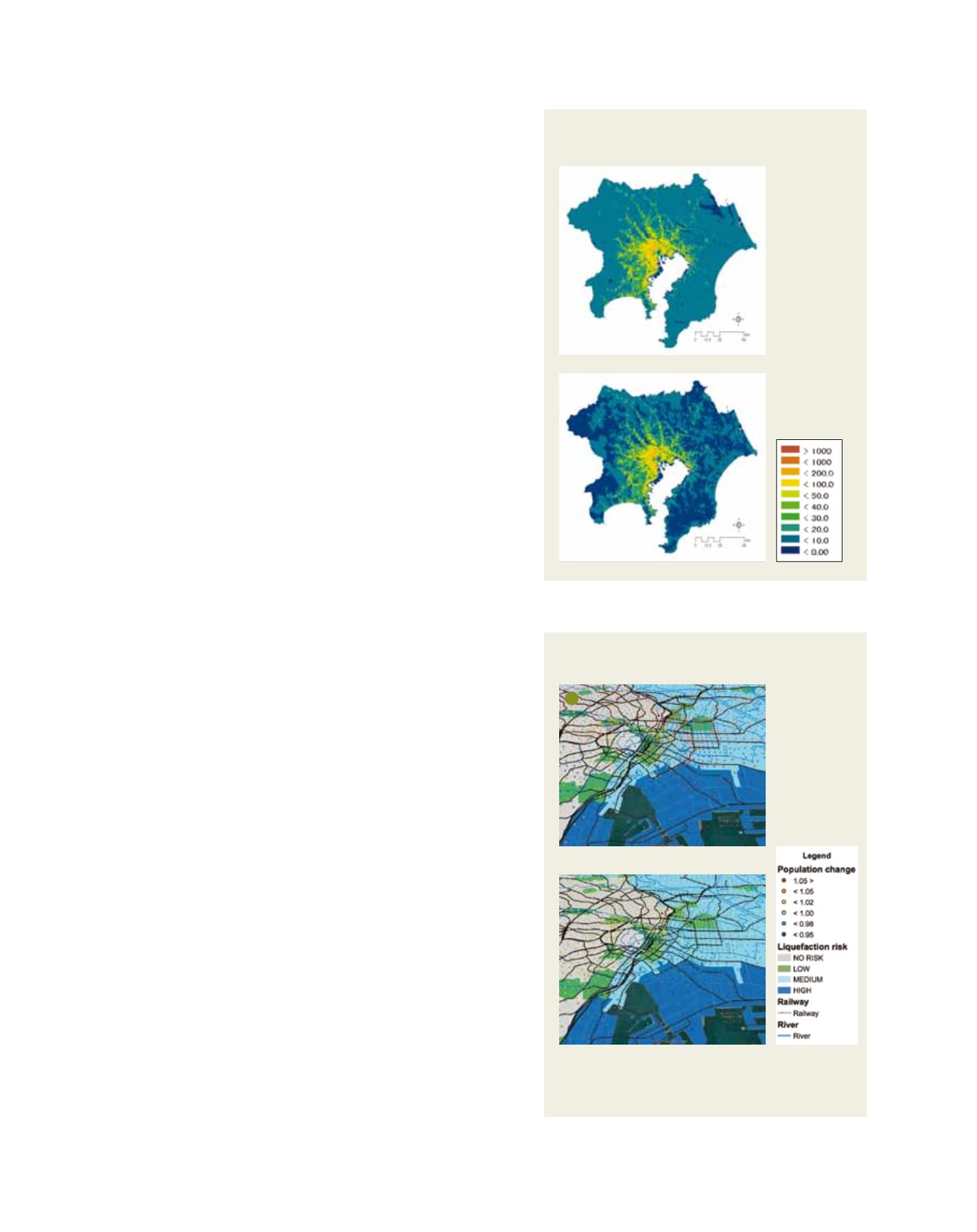

[
] 219
U
rban
I
ssues
the behaviours of the associated household/developer agents
using parameters such as the spatial distribution of households,
land rent, building rent, land demand and supply, and build-
ing floor demand and supply.
2
The model has been calibrated
with recent socioeconomic data at the district level (around 1
km grid). Next, we projected two different land-use scenarios:
compact city and dispersion. The two scenarios were produced by
calculating the equilibrium of housing location due to the change
of land-use policies (incentive) in both compact and dispersion
directions. For the two scenarios, we estimated the CO
2
emis-
sions, heat emissions from buildings and transport (road), the
green space ratio, building density and so on.
Following this, we simulated and compared the heat island
effect for the compact and dispersion scenarios by inputting all
the parameters of the two scenarios into an urban climate model.
3
Interestingly, the results showed that in the compact city case,
the urban heat island effect will decrease by 0.5 of a degree if the
suburban areas, where housing is moved from, are re-vegetated.
However in the dispersed city case, the heat island effect will
worsen, with a 0.5 degree increase due to both urbanization and
a decrease in vegetation in the suburban areas. Spatially explicit
land-use scenarios were only recently introduced as a part of
the Intergovernmental Panel on Climate Change’s global climate
modelling. However, as our preliminary modelling attempt
suggests, such scenarios would be more important for urban and
regional planners who need to look at specific local adaptation
measures against climate change. For achieving sustainabil-
ity, nothing is more important than the need for stakeholders
to come up with an appropriate plan with scientific knowledge
about possible risks.
Possible synergies between scenarios
Using the urban simulation model, we also analysed the possible
synergies between climate change mitigation and adaptation. We
considered a case where, as a climate change adaptation measure,
houses in the high flood risk area are moved. Then, in addition
to the compact city scenario, we assumed that electric vehicles
replace conventional cars and photovoltaic panels are introduced
as climate change mitigation measures.
The CO
2
emissions for the current business as usual (BAU)
and the above-mentioned adaptation/mitigation scenario suggest
that potential for a large reduction in CO
2
emissions exists in the
adaptation/mitigation scenario if a solar power plant could be
constructed in the high flood risk area that houses are moved from.
A sustainable future
We have created future land-use change scenarios with geographi-
cal distribution in Tokyo and tested them for climate change
measures. To support designing future sustainable cities, it will
be important to:
• Create an urban simulation platform that offers climate
risk information required for making cities more resilient
to climate extreme events with more advanced
meteorological modeling
• Support integrated assessments to deal with
complex impacts of extreme climate events and
other risks including earthquakes
• Provide policymakers with the implications of different
land-use scenarios based on various sustainability indicators.
Source: Yamagata et al. (2012)
Source: Yamagata et al. (2012)
The spatial distribution of CO
2
emissions showing
(a) BAU and (b) the mitigation/adaptation scenario
A comparison of the flooding risk between (left)
BAU and (right) the adaptation/mitigation scenario
Scenario (a) is ‘business as usual’. In the mitigation and
adaptation scenario (b), people avoid the high-risk areas,
achieving ‘compactness’ of the city
(b)
(a)
(b)
(a)
















